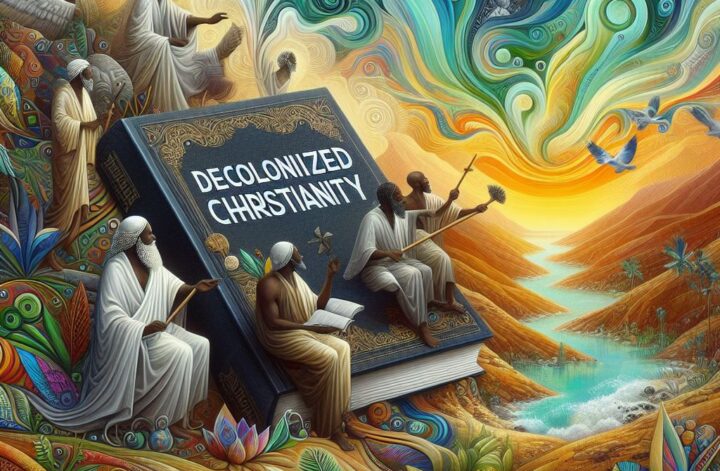The Book of Revelation has been on my mind for a few months now. I have read and re-read the book and consulted with some of the best specialists in modern scholarship. Some things I knew, but there have been so much more I was ignorant of. I am just gonna say a few things here. (I may also walk through the whole book, picking out specific nuggets I found interesting.)
1. If John wrote Revelation as a graduate schoolwork today, he no doubt would get an “F.” No, it would not be so much because his work would be difficult to understand – Immanuel Kant probably surpassed John on that point and is still praised for it. John would score an F because of plagiarism, failing to properly cite his sources. (Of course, John did not do any wrong per the literary standards of his day.)
2. Let us get the simple hermeneutics point out of the way. John wrote to encourage young churches near the first century. So whatever John wrote about was something that, in principle, his audience could/would have understood. Hence, there are no cryptic references to helicopters, missiles, China, Russia, Putin, Trump or any of the other recent lazy readings.
3. Indeed, there is cryptic messaging in the book -it was John’s way of critiquing the empire without its knowledge. The cryptic messaging is of a very different sort from what people now tend to imagine. For example, John primarily referred to Rome as Babylon, and that move is itself pregnant with a whole worldview and dense theology.
4. Virtually every sentence in Revelation is an allusion (as a solid Study Bible would reveal. See the ESV for a taste) – mostly to the Old Testament but sometimes to Second Temple Era Jewish literature or Greco-Roman literature. Yet, John often does not prepare his readers for the allusion. Even worse, John often combines materials from two or more sources with no warning whatsoever. It is a rarity to come across a direct quotation in Revelation as one would see in Paul’s writing or Matthew’s.
5. John assumes SO MUCH of his readers in writing Revelation. (To be fair to him, he expects the book to be read aloud perhaps by leaders of the churches. See Rev 1:1-3). The modern-day reader is expected to know her Old Testament back and forth, inside-out. There is about zero chance of understanding Revelation without a solid understanding of the Old Testament in its Jewish context. (Perhaps this, in John’s mind, is fair because the Old Testament was THE Bible of Jesus, Paul, James, John, AND everyone else. The New Testament is, in many ways, merely inspired commentary on the Old Testament.)
6. In fact, Revelation contains more Old Testament references than any other book of the New Testament. Some of the Old Testament books referenced are Genesis, Exodus, Leviticus, Number, Deuteronomy, Judges, books of Samuel, the Kings, Psalms, Proverbs, Song of Songs, Job, the major and minor prophets. John, however, did not use these books equally. G. K. Beale, one of the specialists on the book of Revelation writes in one of his works on Revelation, “Roughly more than half the references are from the Psalms, Isaiah, Ezekiel and Daniel, and in proportion to its length Daniel yields the most” (60). Put another way, without a solid understanding of the Psalms, Isaiah, Ezekiel, Daniel, Zechariah (and many more) in their wider contexts, one has close to zero chance of understanding Revelation.
One Selected Example
In Revelation 1:13-15, John describes the person he sees in the vision talking to him in this way:
“and among the lampstands was someone like a son of man, dressed in a robe reaching down to his feet and with a golden sash around his chest. The hair on his head was white like wool, as white as snow, and his eyes were like blazing fire. His feet were like bronze glowing in a furnace, and his voice was like the sound of rushing waters.”
This is one of those instances that would earn John an” “F” in today’s scholarship. In this seemingly boring description, John combines at least two references with a subtle twist. The first reference (which John said nothing about but that surely informed the writing) is from Daniel 10. Not surprisingly, it is also a passage about a vision.
This passage is itself somewhat confusing regarding the number of actors. But Daniel says he saw a vision dated to the third year of Cyrus’s reign and that a man spoke with him in that vision. Here is how Daniel described who he saw in 10:5-6:
“I looked up and there before me was a man dressed in linen, with a belt of fine gold from Uphaz around his waist. His body was like topaz, his face like lightning, his eyes like flaming torches, his arms and legs like the gleam of burnished bronze, and his voice like the sound of a multitude.”
The similarities should be apparent. It may be interesting to note that, among the dissimilarities, John describes the voice as that of the sound of rushing waters where Daniel says sound of a multitude. However, these descriptions may be saying the same thing since the Bible often describes a multitude of people in water metaphors.
But what has John done in his appropriation of the Danielic vision? A comparison of the two descriptions will reveal certain differences. For instance, “the hair on his head was white like wool, as white as snow” in John’s description is missing from the Daniel 10 vision. Where did that come from? It came from an earlier Danielic vision in chapter 7:9,
“As I looked,
“thrones were set in place,
and the Ancient of Days took his seat.
His clothing was as white as snow;
the hair of his head was white like wool.
His throne was flaming with fire,
and its wheels were all ablaze.”
So, John has transferred a description originally used of the Ancient of Days in Daniel to the Son of Man talking to him in the vision. This is one of the more subtle, besides the explicit, ways that John describes Jesus as Yahweh in Revelation. (I have already dealt with Daniel 7 as a central data point for the idea of the divinity of Jesus elsewhere.)
By blending boring descriptions together (with no citations), John makes theological and polemic moves. This is the sort of things he does in the entire book – and that is why a close reading and sound knowledge of the Old Testament (as well as the wider contexts) is necessary for a decent understanding of Revelation.
Reference
Beale, G. K. John’s Use of the Old Testament in Revelation. T&T Clark, 2015.




